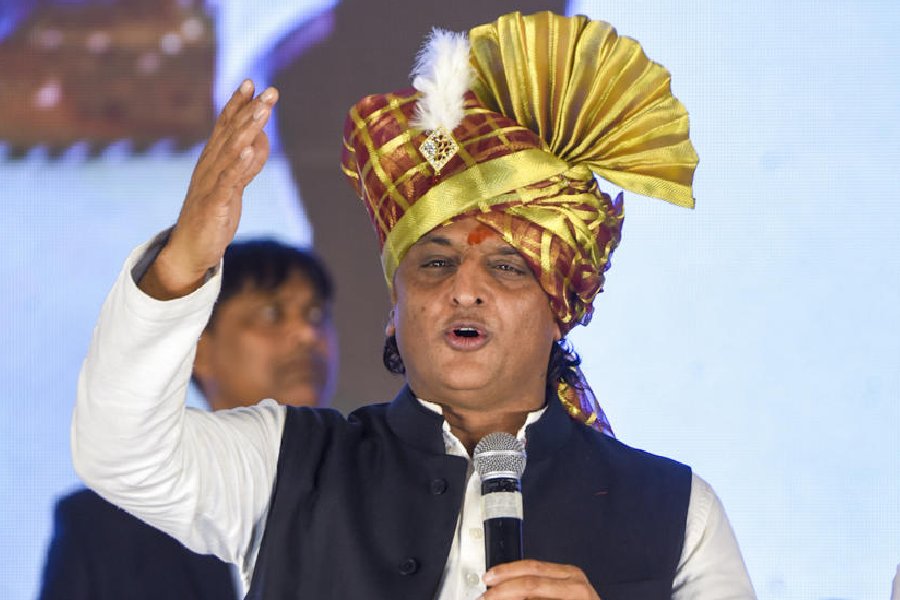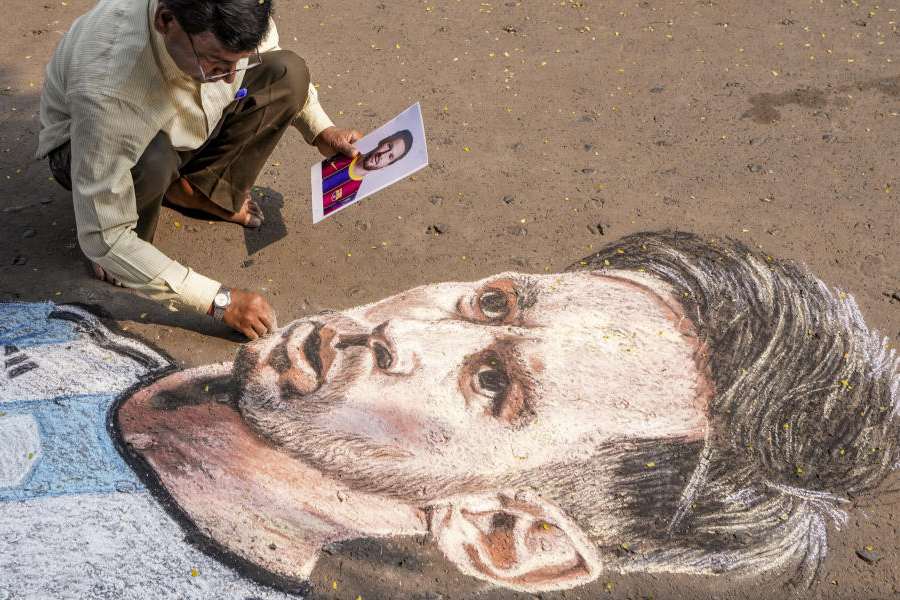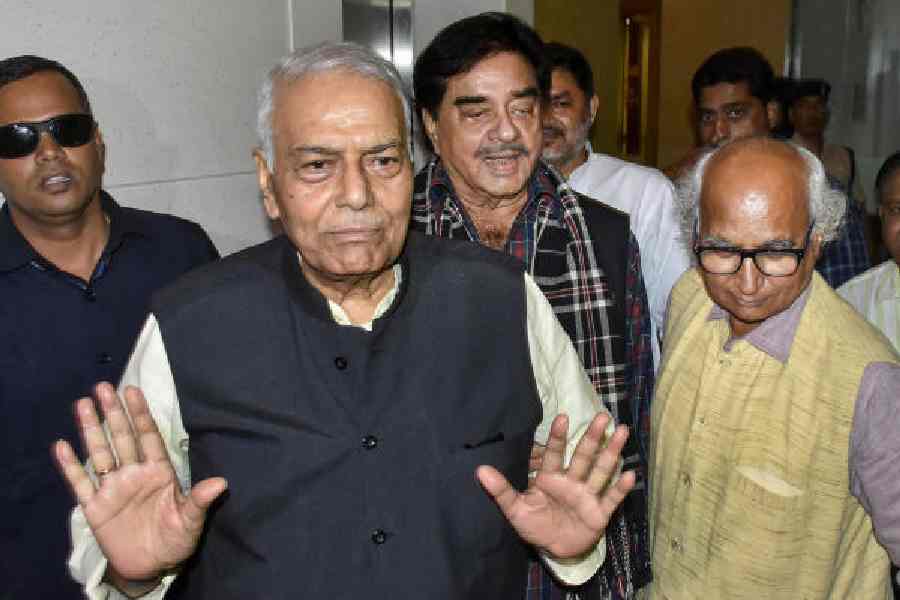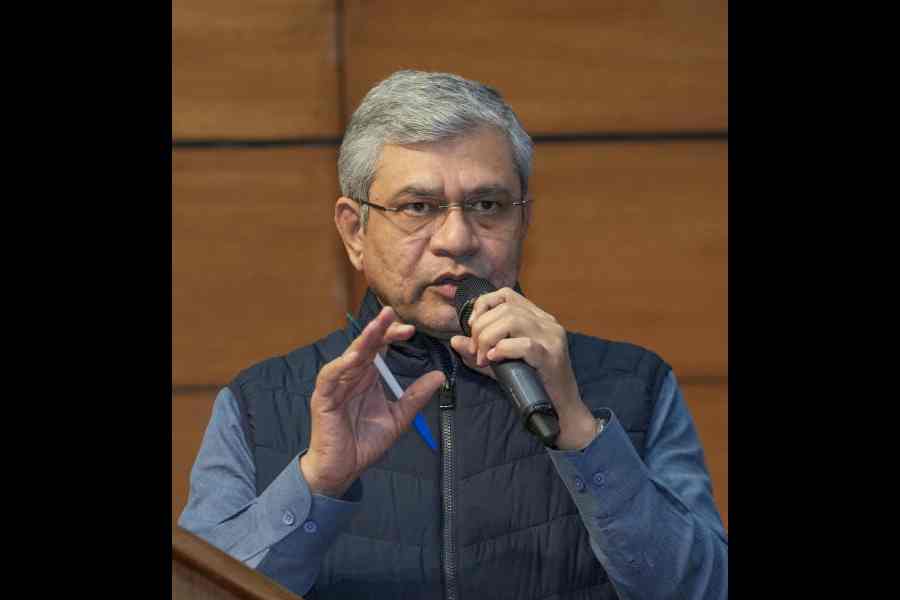 |
New Delhi, Feb. 26: Major General Shakil Ahmed, the chief of Bangladesh Rifles, and his wife have been killed in the mutiny that briefly spiralled out of Dhaka but ended this evening after a show of force by rolling tanks.
As many as 56 of the 72 army officers deputed to the Bangladesh border force are feared to have been gunned down by the mutineers who rebelled over pay disputes. However, the official toll has been put at 14 — eight officers and six civilians.
The murder of Ahmed’s wife stood out for betrayal and brutality: a personal security guard emptied his gun on her in the family’s quarters inside the BDR complex, highly placed sources told The Telegraph. “Her body was put in a jeep and the vehicle was set ablaze,” a witness said in Dhaka.
The treachery carried echoes of another subcontinental tragedy — the assassination of Indira Gandhi who was gunned down by her bodyguards.
Reports reaching New Delhi said one of Ahmed’s two daughters was also killed along with her mother. But another version in Dhaka said the daughters escaped because they were in a school outside the compound, writing examinations. The Telegraph could not confirm either version independently.
 |
| Shakil Ahmed |
By the time the wife fell to the bullets of the guard, probably a runner who took care of errands, the major general himself had been shot by a sepoy in a fit of rage, according to multiple sources in Dhaka as well as Delhi.
So many officers were present at the border force headquarters in Dhaka because the BDR Week was being celebrated. Prime Minister Sheikh Hasina had inaugurated the celebrations on Tuesday — the event ironically setting the stage for the worst crisis to confront her since storming to power two months ago.
A day before that, disgruntled soldiers of the BDR met Ahmed and some of his juniors — all army officers on deputation to the BDR — and urged them to raise their grievances with Hasina at or after the function. Some even asked that Ahmed should do so in his speech.
These grievances were over salaries, perquisites (better living conditions) and greater opportunities for deployment in UN missions. But Ahmed did not raise these issues, at least in public, prompting one person to ask Hasina abruptly why the BDR was being discriminated against.
Tempers flared up because the day before, Hasina had lauded the army’s role in restoring democracy and announced a hefty raise for the military — something the aggrieved BDR was also expecting.
Accounts of what happened after Hasina left vary. One version suggests the person who raised the question was disciplined soon after but others said the flashpoint came the following morning.
On February 25, during the daily morning parade when Ahmed was taking the salute, one trooper raised his voice and asked the chief why he did not take up the BDR’s grievances with Hasina.
Ahmed told the soldier to “fall out” and asked a junior officer to punish him. According to one account, the trooper was to be put into the doghouse — a small confined space where he would roil in the sun. In another account, he was to carry a recoilless gun or a rifle over his head and run several rounds around the courtyard till his legs felt like jelly and his arms limp.
A comrade could not take this. Soldiers at parade to give the salute to the superior are not usually armed unless they are ready to go into action. The comrade ran to the corner where arms were stockpiled, pulled out a pistol, scurried back and, in a fit of rage, pumped the major general with bullets in the courtyard.
But mutineers who came out this evening claimed that Ahmed opened fire on the sepoy who questioned him, triggering the mutiny.
In minutes, the courtyard was showered with bullets, some from pistols, some from recoilless guns manned in twos and threes and, later, aimed at helicopters.
Some men manned mortars. Shells littered the streets of Dhanmandi and New Market. A rickshawpuller was killed. So were Colonel Mujibul Haq, once a leader of the simply named Operation Dal Bhaat in the Dhaka sector, and Lt Colonel Enayet, the commander of the 36 Battalion.
The rebels held out for several hours even after Hasina offered a general amnesty last evening, insisting that the army be withdrawn and they would surrender only to one of their superiors.
Eventually, the government asked Subedar Major Mohammad Touhid, said to be the senior-most in the original border force cadre, to accept the arms.
By then, Hasina had gone on air to warn of tough measures. “We don’t want to use force,” Hasina said. “But don’t play with our patience. We will not hesitate to do whatever is needed to end the violence….”
She also sent in tanks as another persuasive measure. Twenty tanks and 15 armoured vehicles with heavy machine guns from the ninth division — notorious for its role in coups — rumbled into Dhaka, taking up positions in residential neighbourhoods around the BDR complex.
The mutineers then hoisted a white flag and completed the surrender by late evening.
Before the surrender, unrest broke out in several parts of Bangladesh, possibly whipped up by the hardline Jamaat-e-Islami. At least three BDR commanding officers were reportedly shot dead in Rajshahi, Satkhira and Teknaf.
Sources said Touhid could be holding fort for the time being but eventually an army officer of the rank of major general would be given charge of the border force.
However, in future, the officer cadre of the BDR would be sourced from the State Armed Police, a force meant for emergencies.










